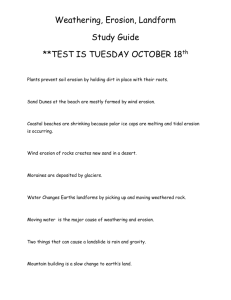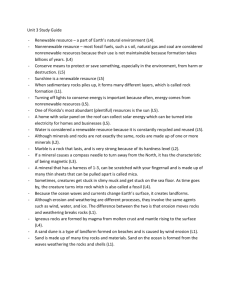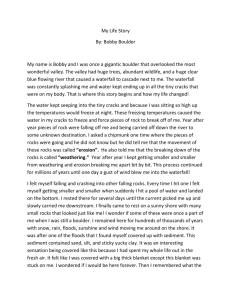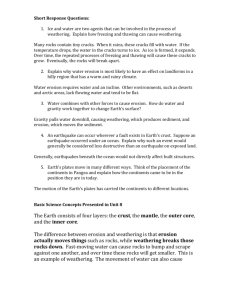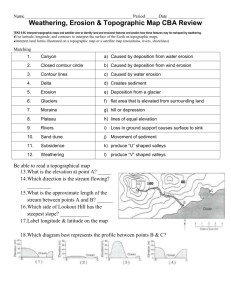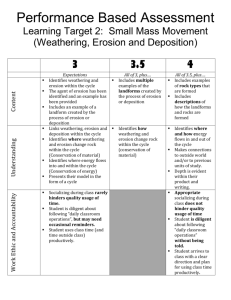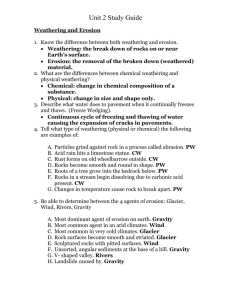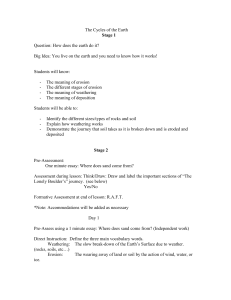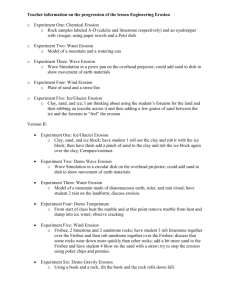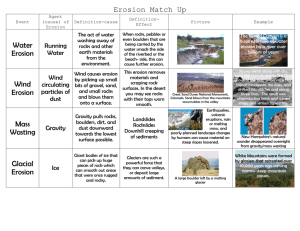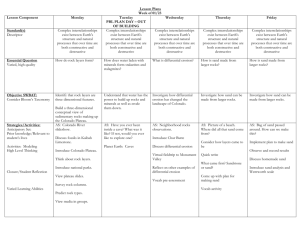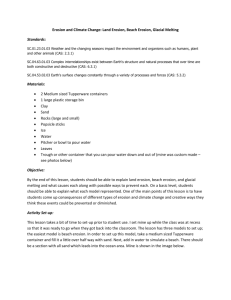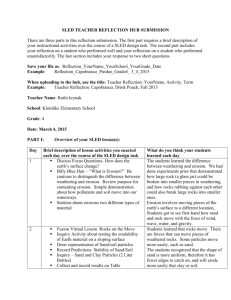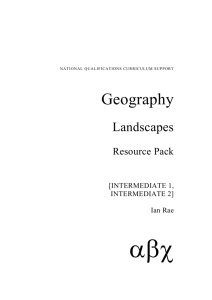Weathering, Erosion, and Deposition Test Study Guide Friday May 1
advertisement
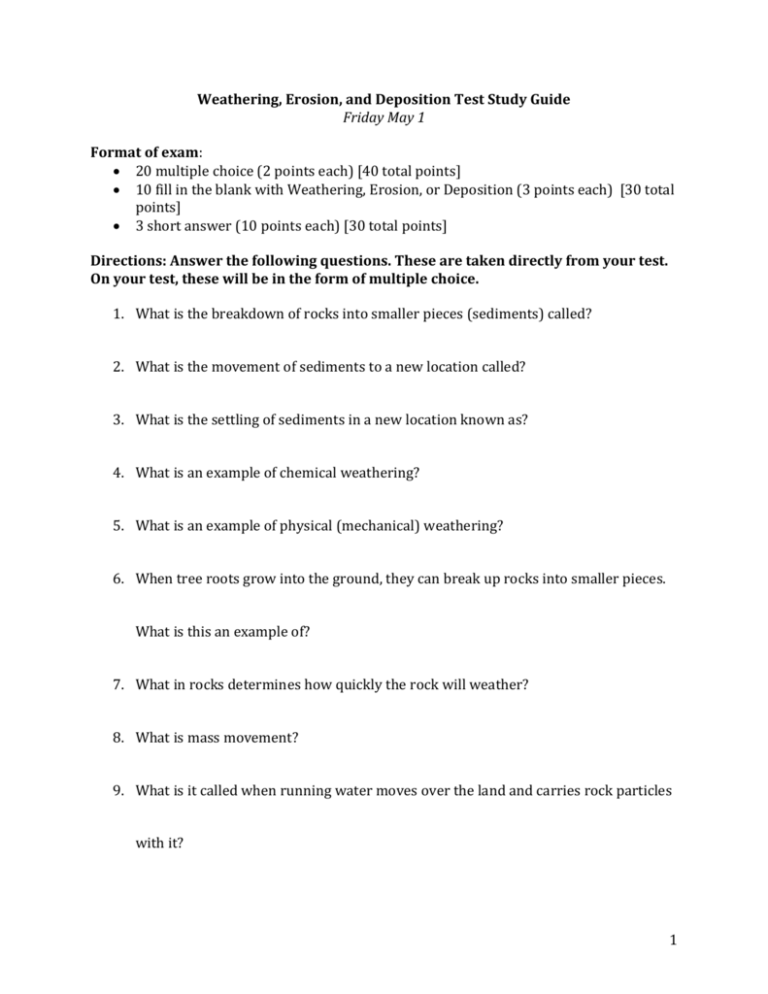
Weathering, Erosion, and Deposition Test Study Guide Friday May 1 Format of exam: 20 multiple choice (2 points each) [40 total points] 10 fill in the blank with Weathering, Erosion, or Deposition (3 points each) [30 total points] 3 short answer (10 points each) [30 total points] Directions: Answer the following questions. These are taken directly from your test. On your test, these will be in the form of multiple choice. 1. What is the breakdown of rocks into smaller pieces (sediments) called? 2. What is the movement of sediments to a new location called? 3. What is the settling of sediments in a new location known as? 4. What is an example of chemical weathering? 5. What is an example of physical (mechanical) weathering? 6. When tree roots grow into the ground, they can break up rocks into smaller pieces. What is this an example of? 7. What in rocks determines how quickly the rock will weather? 8. What is mass movement? 9. What is it called when running water moves over the land and carries rock particles with it? 1 10. Name the 5 agents of erosion. 11. Which continent is an example of a continental glacier? 12. How does groundwater erosion happen? 13. What is mudflow? 14. What type of erosion is a waterfall? 15. When a meander has been cut off from a river, what can form? 16. What is an example of glacial erosion? 17. What is a large mass of ice that moves slowly over land called? 18. What occurred 1 million years ago when continental glaciers covered large parts of the earth? 19. What is an example of wave deposition? 20. Which delta did we read about in New Orleans that experiences a lot of flooding? Given the situations, write whether it is an example of Weathering, Erosion, or Deposition (only 10 of these are on your test) 1. Flood water pounding against a canyon wall and wearing it down 2. Rain washing away soil from a hillside 3. Layers of sediment forming at the bottom of the ocean 2 4. A mudslide flowing down a steep hill 5. Glaciers dropping rock and sand to form terminal moraines 6. Waves dropping sand on the beach 7. Caves being formed by acid rain dissolving underground limestone 8. Deltas forming at the mouths of rivers 9. Water getting into rocks, freezing, and cracking the rocks or pavement apart 10. Wind blowing sand from one location to another 11. Wind blasting sand at rock and carving out arches 12. Glaciers scraping rocks against the earth’s surface 13. Muddy water being carried away by a fast-moving river 14. Rocks being made smooth by tumbling across a streambed 15. Ponds filling up with sediment and becoming marshes 16. Flood waters moving soil from one location to another. The questions below are example of short answer questions. Only 3 will be used on the test. 1. Write the five agents of erosion a. Choose one from your list in #1 b. Write how this demonstrates erosion. c. Write one example of this agent of erosion. 3 2. What is an Ice Age? What was realistic about an ice age that we watched in the “Ice Age” movie preview? What was unrealistic? 3. In Activity 28, we put sand on a river model and watched it “rain” on the sand. a. How is this an example of erosion? b. How was this model similar to an actual river? c. How is it different from an actual river? 4. We read about the Mississippi Delta. What are some peoples people experience who live on the delta? Would you ever live near the delta? Why or why not? 4



